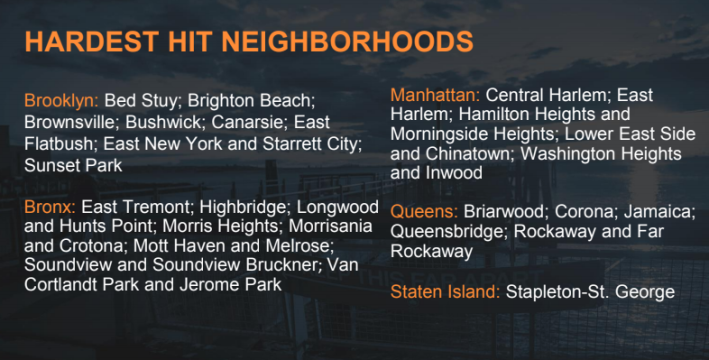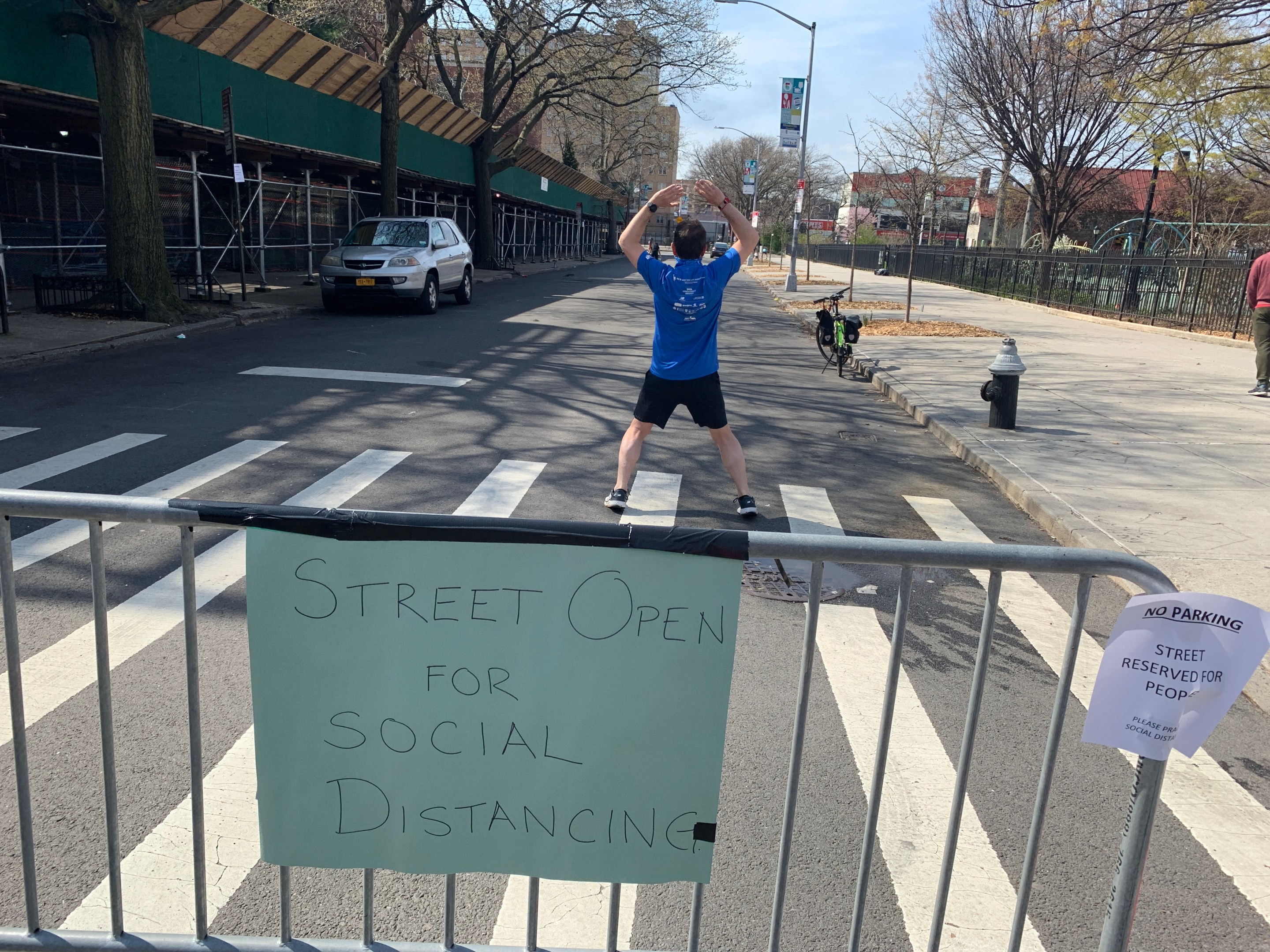New York City is giving schools the option to hold classes outdoors in an attempt to prevent the spread of coronavirus, Mayor de Blasio announced at a press conference on Monday, meaning that some schools may seek to open streets around school buildings for use as car-free space for recreation, lunch, instruction and other activities.
But the question of whether to do it will be up to each individual school leader — and they have scant time to move on their decision.
School principals must submit their plans to do outdoor learning by Aug, 28, giving them less than a week to register their plans with the city and solidify them with the departments of Transportation, Sanitation, and Parks and Recreation, plus the NYPD and the FDNY.
The program could take back some public roads around schools from car drivers, who killed 10 children in crashes in 2019, according to a Streetsblog analysis. It might also trigger tiffs over parking around schools, if more teachers seek to drive to work instead of taking public transportation because of the pandemic. Principals will also have to grapple quickly with whether to take back playgrounds from teachers who in some instances have turned the outdoor areas into parking lots.
"We know [coronavirus] doesn't spread the same outdoors, so we want to give schools the option to do as much outdoors as they can," de Blasio said at his daily briefing. "Starting today we empower our principals to determine the maximum amount they can do outdoors; it's up to them to figure out how to use schoolyards and anything on school property that's outdoors."
The mayor went on to say that the city also would examine requests to open streets for learning and use nearby parks if principals wanted, but did not say whether street classrooms would be completely closed to traffic or would operate like the open streets, which allow for local traffic.
The head of the principals union, Mark Cannizzaro, said in a statement that the administration had acted "far too late and haphazardly" for school leaders in announcing the plan, but Schools Chancellor Richard Carranza made the case that the tight timeline isn't as restrictive as it sounds.
"As principals have submitted their building utilizations plans, there are a number of principals who've identified outdoor learning as one of those options," Carranza said at the press conference. "It's not like no one has thought about this and now it's 'surprise, you can have outdoor learning.' Principals have asked about this," the schools chancellor asserted.
According to Carranza, Monday's announcement signaled that the city was cutting through bureaucracy in order to help local schools achieve outdoor learning, similar to the way that the city enabled bars and restaurants quickly to take parking spots to set up outdoor dining.
De Blasio and Carranza both emphasized that the decision on outdoor learning would be up to each school principal, although the mayor promised that the city would cover any unexpected costs. De Blasio also said that the city was going to focus the implementation of the program on 27 neighborhoods that have been hit hardest by the coronavirus.

Carranza also said that the city was going to ask PTAs in wealthy neighborhoods to assist schools in poorer ones with fundraising for any supplies they might need, such as tents, in order to make sure that outdoor learning did not become a privilege only of the rich or middle class. That announcement was welcomed by outdoor-learning advocate Council Member Brad Lander, who also called for more federal and state funds to help pull off the plan.
"I’m especially glad to see the Department of Education adopt our idea to strongly encourage PTAs who purchase tents or gear for their own schools to contribute an equal amount for schools that don’t have those resources," Lander said in a statement. "For access to outdoor space — and , of course, for our schools far more broadly — to really be equitable, we need far more resources from the federal government and the state."
If a principal wants to close a street in front of a school, the city laid out requirements for the streets that would be considered:
- Is a quiet, non-commercial street?
- Is a one-way street; if two-way, not more than one lane of traffic in each direction.
- Is not an MTA bus route or truck route.
- Is not used by a police/fire station, parking garage, or hospital.
With in-person learning set to resume on September 10, one teacher panned the delay and tight deadline in announcing outdoor learning, which only came after a sustained push by both legislators and parents.
"The city has had four months" to ponder how school could resume safely, said Aaron Benoit, an English teacher at Eagle Academy for Young Men at Ocean Hill. "You would think that this would be studied and recommendations would be made, but once again it falls upon those already being asked to rewrite what it means to educate to make a best guess on a deadline."






